The history of the Sherman neighborhood in east Omaha is still being written, and the tale of churches have been part of that story since the area was established more than 120 years ago. One of the longest-standing institutions in the neighborhood is now gone, but still leaving a positive mark. This is a history of St. Therese of the Child Jesus Catholic Church.
Catholic East Omaha
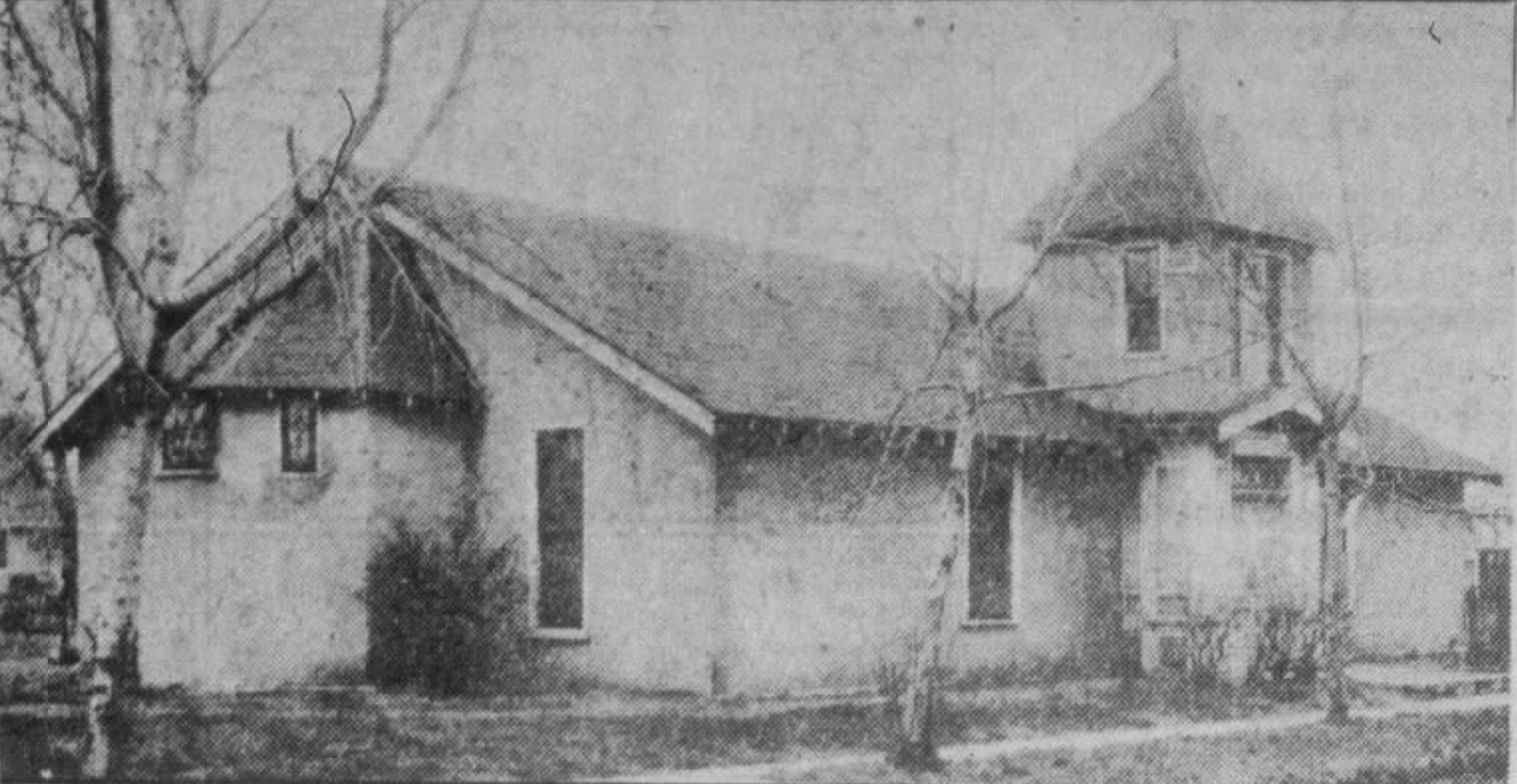
The entire section of Omaha from the cliffs east of Florence Boulevard to the Missouri River is referred to as East Omaha by the people who live there. Before there were a lot of houses there, there were a couple of roadhouses aka resorts around a big pond that doesn’t exist anymore called Florence Lake. There were also early farmers and a few scattered houses.
The neighborhoods in this area began in earnest in the 1880s, when the first developments along North 16th Street opened for development. The first group of developments was the Sherman neighborhood, named for North 16th when it was called Sherman Avenue and led to a one-room schoolhouse on Ellison Avenue. There were small farms scattered throughout the area, along with a little village of summer homes on the northeast corner of present-day Carter Lake. In 1926, a new housing development east of the Sherman neighborhood started called Lakewood Gardens along with its neighbor, the Carter Lake View development.
Many of the truck farmers in east Omaha were Catholic, and there was a growing population in the area immigrating from Europe, among whom a lot were Catholic. Along with Hungarians there were also immigrants in east Omaha from Italians, Ireland, Poland and other countries.
Archbishop Harty directed the formation of the parish in September 1917. Rev. Nicholas H. Nosbisch (1863-1928) was the first pastor who led the first Mass in the home of one of the parishioners. In November 1917 they bought nine lots for the future and broke ground for a building that month. That temporary building opened in February 1918 and the school the next September under direction of Ursuline Sisters. It was a wood frame building covered in stucco.
Rev. Nobisch was succeeded by Rev. W.X. Fitzpatrick (1888-1947). In 1921, Rev. Joseph B. Falke (1889-1959) replaced him. In a 1925 report on a failed fundraiser for the parish, the Omaha Archdiocese newspaper said, “As St. Michael’s parish is small, the financial burden is rather heavy on the small congregation. Both school and church are in urgent need of assistance in the way of patronizing the coming lawn social of the parish. Country store, fancy goods’ booth, fish pond and other attractions will give everybody a fair opportunity to carry off prizes.”
St. Michael’s stood for just 14 years until everything changed.
St. Therese of Lisieux
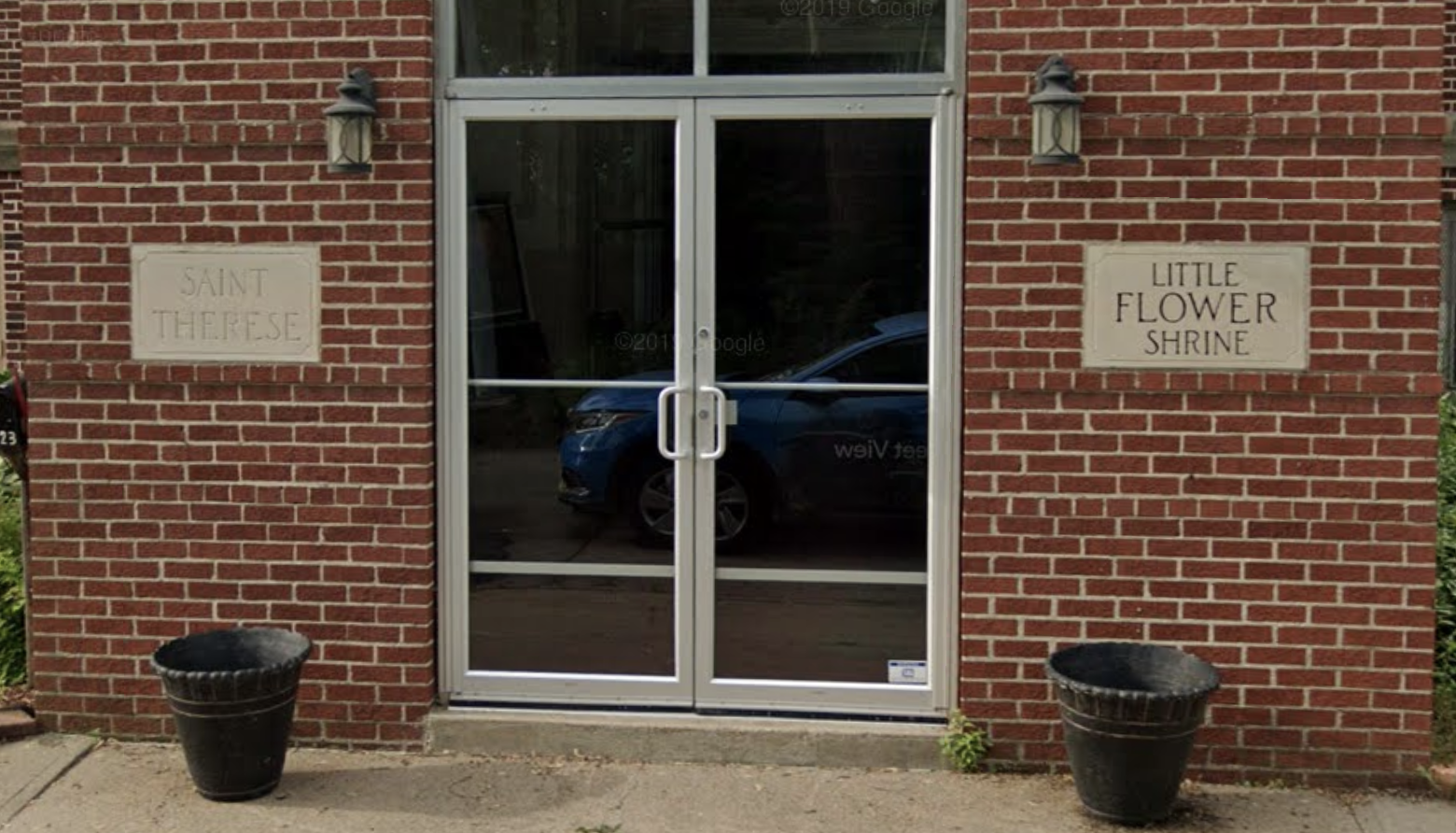
A new name, a new building and a new school came next, all in a single year.
Formally renamed in honor of St. Therese of Lisieux in 1927, church members approved the change to comply with their bishop’s decree that the name would be changed. The bishop had been present in Rome when the young saint was canonized in 1925, which was exceptional because it happened just 27 years after she died. Sending a relic from Rome back to the newly named parish, a shrine was built for it almost immediately in 1927. It was the first church between Chicago and Denver to be named for St. Therese. Rev. Faulke was respected in the archdiocese, and because of that the church received the honor of becoming the official shrine of the city.

Saint Thérèse of the Child Jesus and the Holy Face (1873-1897), also called Therese of Lisieux, was a French Catholic nun. When “the Little Flower of Jesus” died in France, she was already one of the most popular Roman Catholic saints since apostolic times, a role she still has today.
After becoming a Carmelite nun at 16-years-old, Therese “offered constant friendship with the poor in the little villages of Normandy.” Writing a powerful memoir before her early death, she predicted the effects of her book on readers in the future. Widely considered a saint before she died at age 24, during World War One French soldiers carried pictures of St. Therese with them for protection.
Building Anew
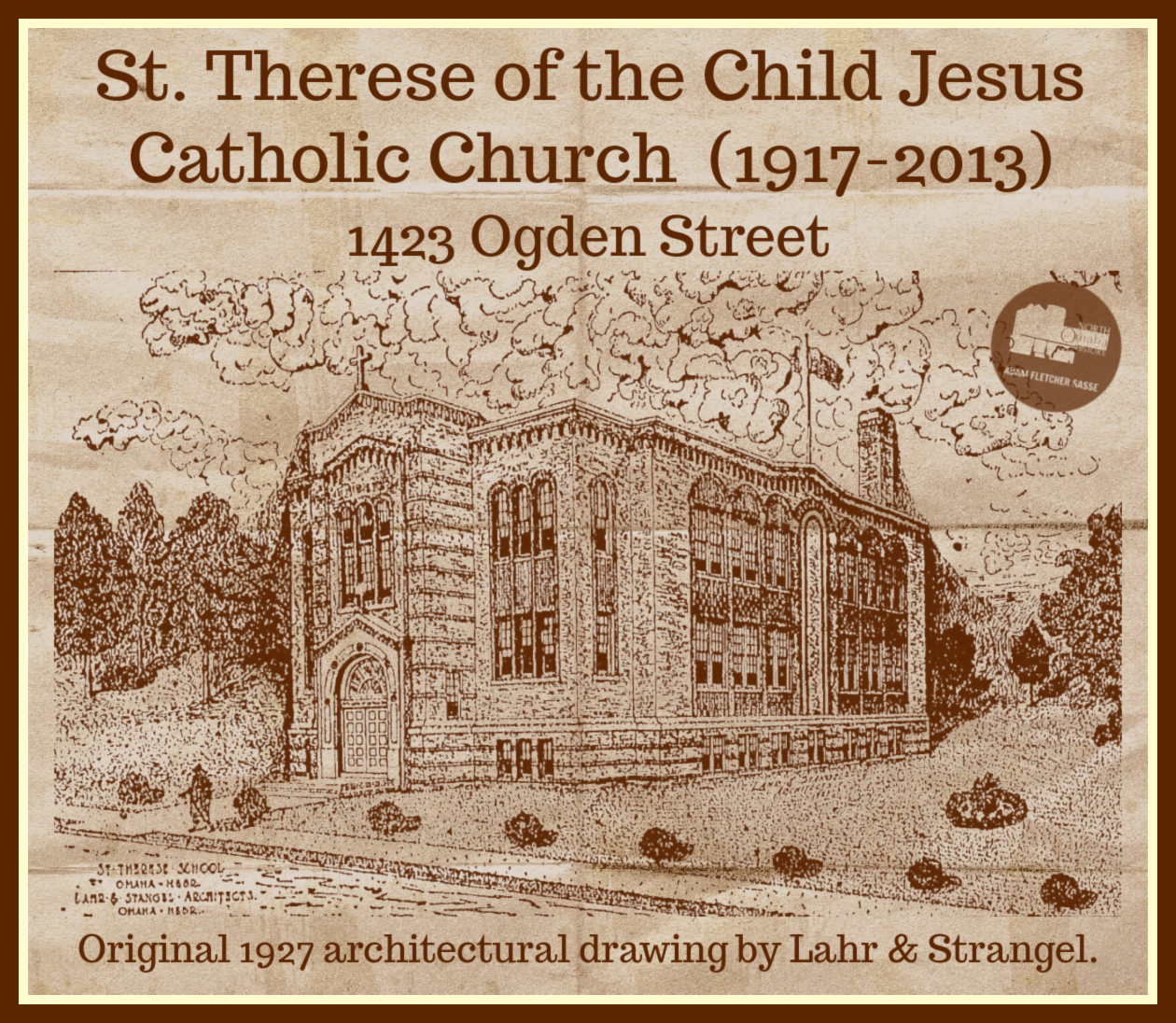
Lahr & Strangel was an architectural firm in Omaha that designed the Notre Dame Academy in Florence, the WOW building, and several buildings at Boy’s Town, as well as many other buildings across Nebraska. Featuring a Romanesque design, the school was had three stories and was “faced with bricks in shades of red, white and blue, symbolic of the American flag.” Intended to be fireproof, the enterance was meant to “combine the influence of a church and a school.” The recreation room on the lower floor could seat 650 people and included a stage, kitchen, showers and a cloak room. The shrine of the Little Flower has an altar made with marble imported from Carrerra, Italy, and was meant to be permanent.
In October 1927, the parish received the cornerstone for its new church. Laid by Bishop Francis J. Beckman (1875-1948), the ceremony included a blessing of the cornerstone, blessing of roses and a sermon about the life of St. Therese. A newly made shrine at the site was dedicated to St. Therese of the Little Flower of Jesus, and the new building would cost $70,000 to build, which is worth $1,213,119.77 in 2024. The new building included the church and a school, and the old St. Michael’s was demolished as soon as the new building was finished.
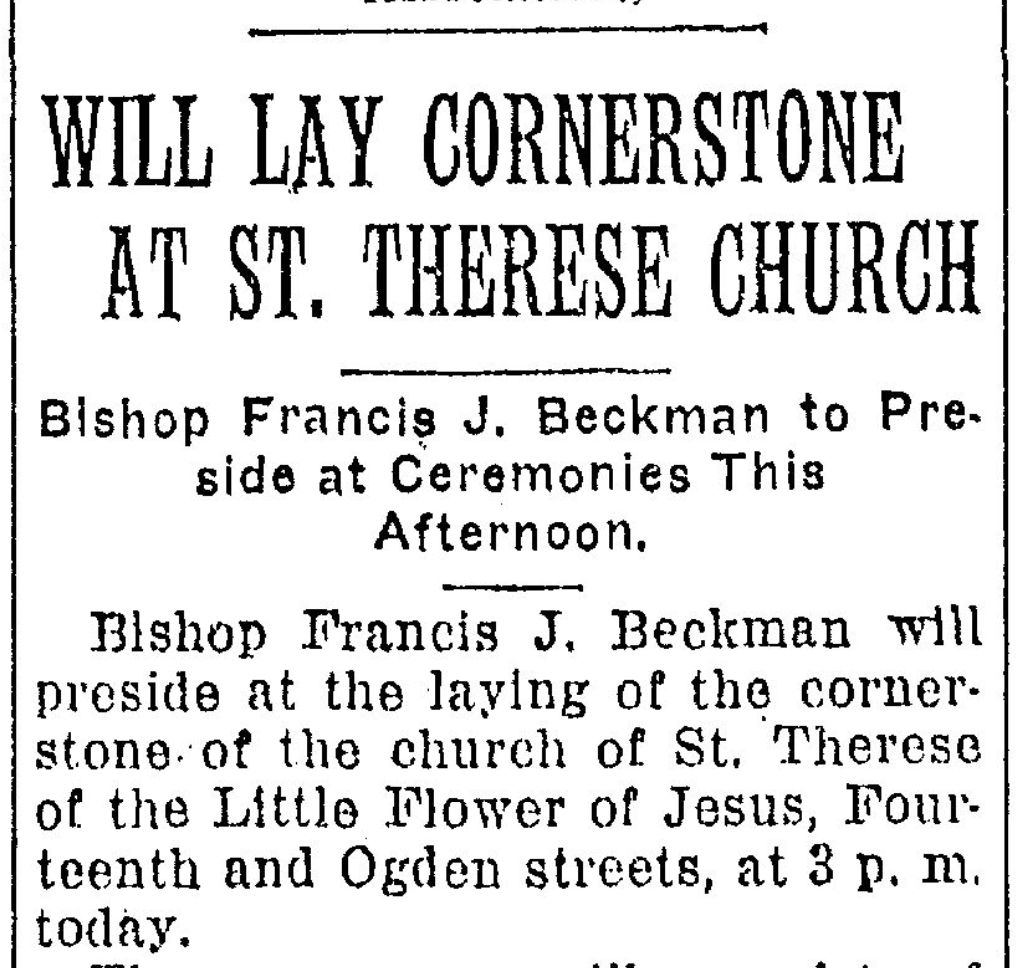
For several years, the parish was home to an annual spring novena to St. Therese. Called “The Little Flower,” it opened at 8:30am and closed at 8pm. Early in the morning before 8:30am, a high mass was held, along with a semon and benediction, and afterward there was another sermon, novena prayers and a benediction. 400 people attended the first year it was held, 1927.
The parish went through normal trials and lives as it aged. Just a few years after it opened, the church was almost ransacked by serial vandals in 1930. The pair had torn through several churches before then and were trying to break into St. Therese when police showed up. Apparently they escaped, but were renowned for ransacking other buildings badly. Nothing was missing from St. Therese though. The next year in 1931, the church was the site of a double wedding that was noted in the Omaha World-Herald. Mary Mantich married Leo Bonnemeir, and her sister Anna Marie Mantich married Eugene Arthur Flescher. Presided over by the parish priest Rev. Falke, the newspaper said 140 people came to the reception held in the parish hall.
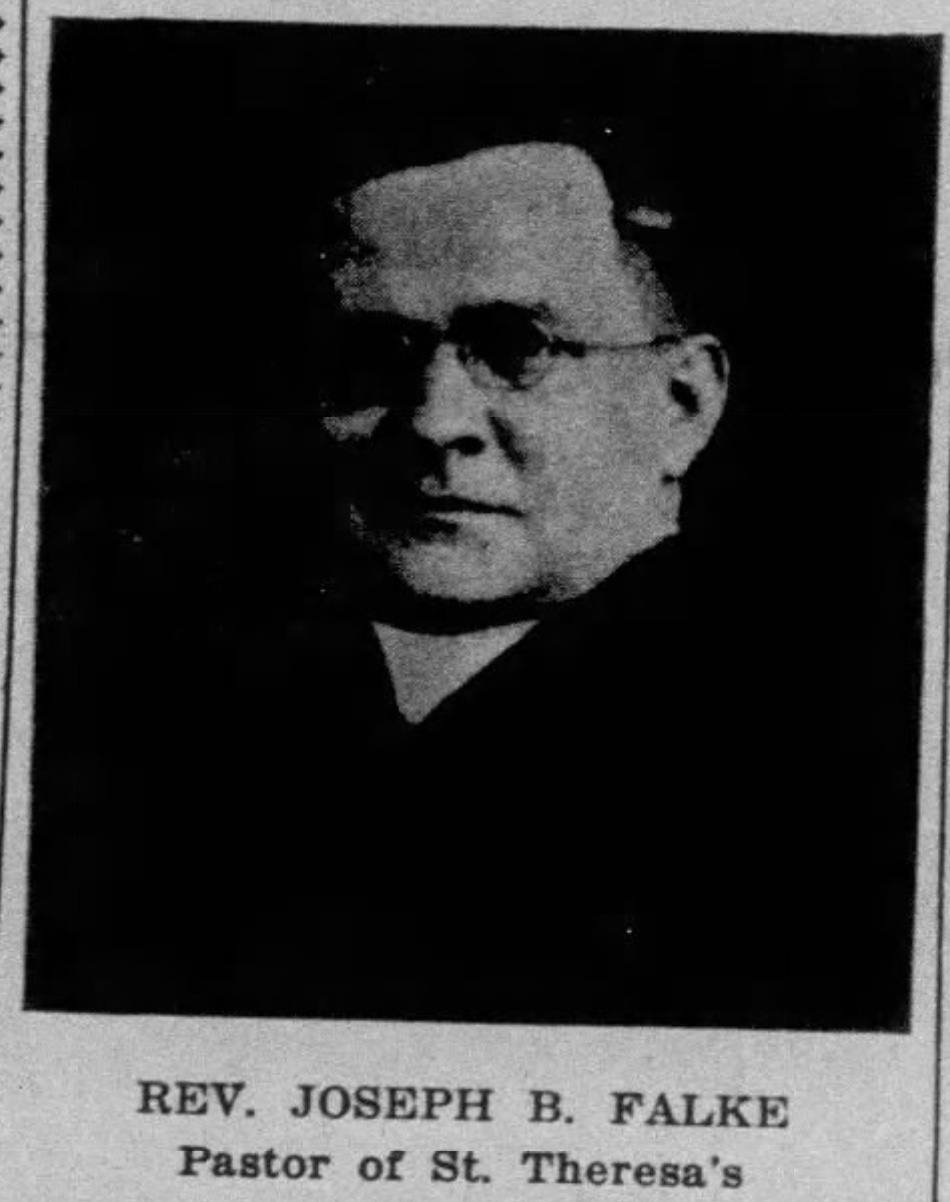
St. Therese’s most influential minister, Rev. Faulke, was replaced in 1934 by a minister from the Holy Angels parish, Rev. James O’Brien. When Holy Angels celebrated their 25th anniversary in 1935, the newspaper was quick to point out that St. Therese was “formed from territory” that originally belonged to Holy Angels. All of this was the normal of the parish, along with baptisms and communions, confessions and Mass, funerals and special events.
In 1943, the church was “inundated” by severe flooding that struck east Omaha. Luckily, the church removed the Blessed Sacrament before the flooding, which eventually rised a foot above the threshold of the rectory and former convent building next door. 70 families in the parish were flooded out and the school was closed for weeks while the playground was covered with 18 inches of water. Moved out of their homes, many homes couldn’t be saved afterwards, and while the parish facilities didn’t suffer direct damage several of these families didn’t return.
Rev. O’Brien served the congregation until 1944.

In 1977, the picture of St. Therese was used in Catholic parishes nationwide as a widespread protest on fake dollars stuffed into church coffers. It was a symbol of defiance at the church’s decision to continue not allowing women to be priests. While there was no report on whether this protest money showed up in east Omaha, its easy to imagine it.
Father Patrick McCaslin was one of the last ministers of St. Therese.
Throughout the years the church played host to numerous programs, including the Northeast Improvement Club, a de facto neighborhood association that advocated for improved services in the area. Visiting nurses, the Eastern Nebraska Office on Aging, and others used the church, too. Rev. Patrick McCaslin officiated there for several years during the 1980s.
Closing St. Therese
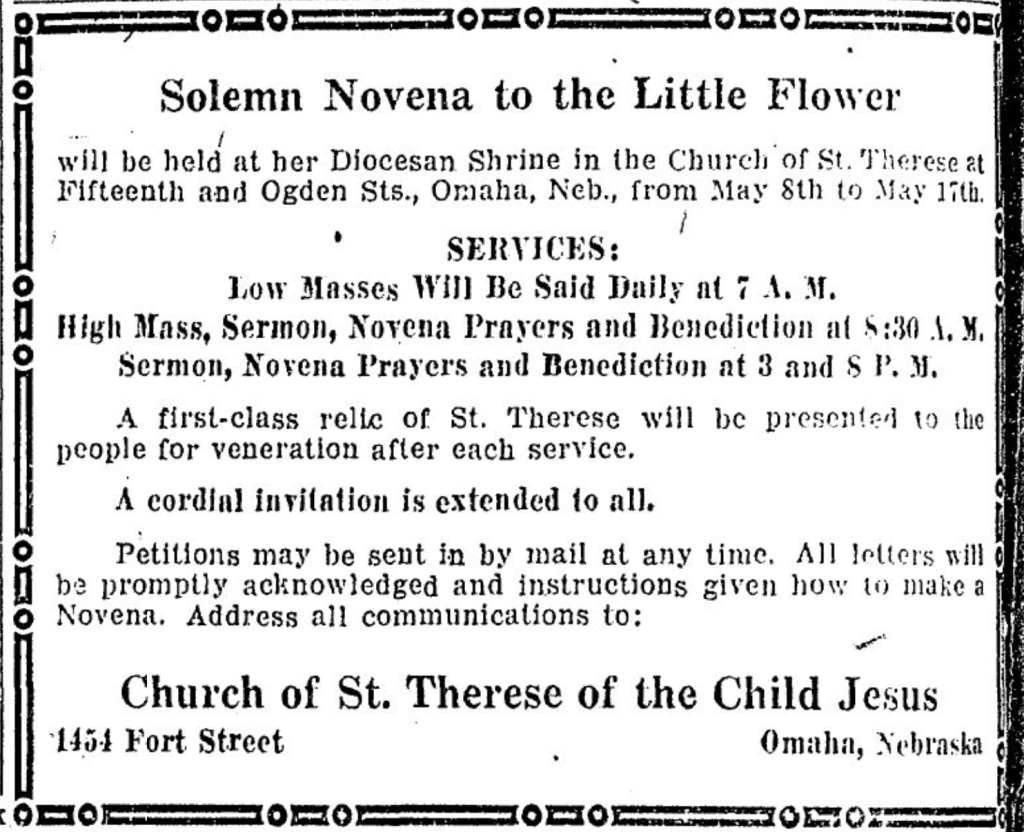
In the early 2000s, the parish became largely Hispanic while being served by a Latino priest. When the Omaha Archdiocese announced it was merging several parishes in 2012, St. Therese was part of the plan. Joining Holy Name Catholic parish near North 45th and Maple Streets, the 350 members of St. Therese were utimately welcome to go anyhwere in the city. They planned a special procession to merge the parishes and a bilingual Mass to welcome the new members. In June 2013, five priests presided over the final Mass was held at St. Therese.
Becoming New Again!
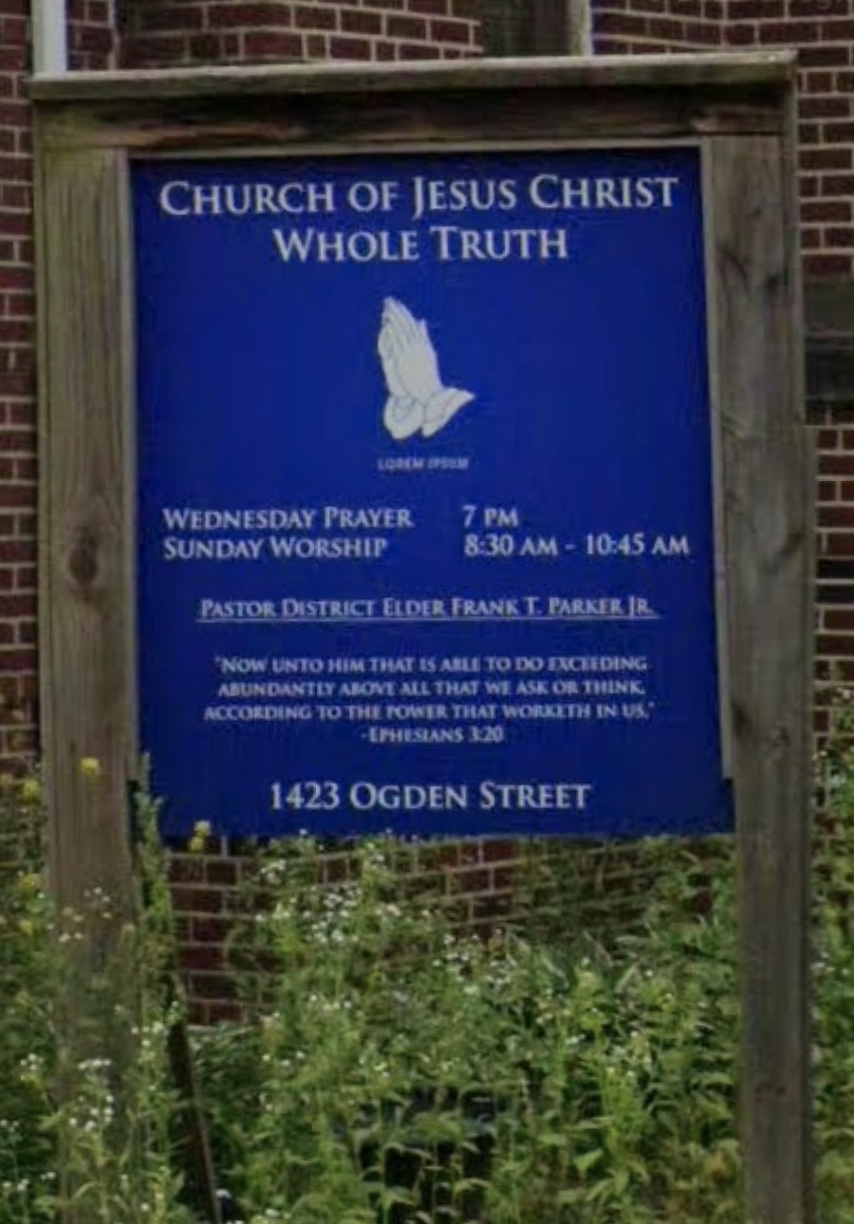
In 2014, the Church of Jesus Christ Whole Truth acquired the former St. Therese. Originally located at 24th and Wirt, they moved to the former church at 1423 Ogden Avenue. Still reaching out to the neighborhood near their old location, in 2015 the congregation hosted a Thanksgiving dinner at the North Omaha Salvation Army on 24th Street and served 500 people under the leadership of Pastor Frank Parker.
After extensive renovations in 2019, the building’s 11,000 square feet are used today by the church for a variety of services.
Today, the building is not recognized by the City of Omaha as an official Omaha Landmark or listed on the National Register of Historic Places. It also has no historical marker at its location to designate its importance to the neighborhood.
Who knows what the future holds for this building as it reaches its 100th anniversary. The Church of Jesus Christ Whole Truth continues to shepherd it to the future though, and maybe the community will stand up for it, too!
You Might Like…
MY ARTICLES ABOUT THE HISTORY OF EAST OMAHA
SEE ALSO: East Omaha History Tour
AREAS: Town of East Omaha | Carter Lake | Winspear Triangle | North Omaha Bottoms | Sherman | Sulphur Springs | Edgewood Park | Bungalow City | Squatter’s Row | Lakewood Gardens | East Omaha Factory District
BUSINESSES: East Omaha Truck Farms | Carter White Lead Company | Nite Hawkes Cafe | Railroads
CARTER LAKE, IOWA: Courtland Beach | Omaha Rod and Gun Club | Carter Lake Club | Sand Point Beach and Lakeview Amusement Park | Omaha Auto Speedway
CARTER LAKE PARK: Municipal Beach | Bungalow City | Pleasure Pier and Kiddieland
PEOPLE: Selina Carter Cornish | Levi Carter | Granny Weatherford
TRANSPORTATION: Ames Avenue Bridge | Eppley Airfield | 16th and Locust Streets | JJ Pershing Drive | North 16th Street | Pulitzer Airfield | Locust Street Viaduct
SCHOOLS: Beechwood School | Pershing School | Sherman School | St. Therese Catholic School
OTHER: The Burning Lady | CCC Camp | St. Therese Catholic Church | 1898 Trans-Mississippi Exposition
Listen to our podcast “A History of East Omaha” online now!
MY ARTICLES ABOUT HISTORIC CHURCHES IN NORTH OMAHA
GENERAL: Directory | Black Churches | Florence Churches
METHODIST: 17th Street | Pearl Memorial UMC | St. John’s AME | Bethel AME | Cleaves Temple | Ames Avenue | Trinity | Walnut Hill | 18th Street |
BAPTIST: Mount Moriah | Zion | Immanuel |
CATHOLIC: Holy Family | St. Benedict the Moor | St. John’s | Holy Angels | Sacred Heart | St. Cecilia | St. Therese
PRESBYTERIAN: Calvin Memorial | Hillside | First United | Covenant | St. Paul
EPISCOPALIAN: St. Phillips |
COGIC: New Bethel | Faith
LUTHERAN: Hope | St. Paul | Mount Olive
OTHERS: Mt. Calvary |
RELATED: St. Clare’s Monastery | Omaha Presbyterian Theological Seminary | North Omaha Catholic Schools | Black Churches | Florence Churches | Kountze Place Churches
BONUS
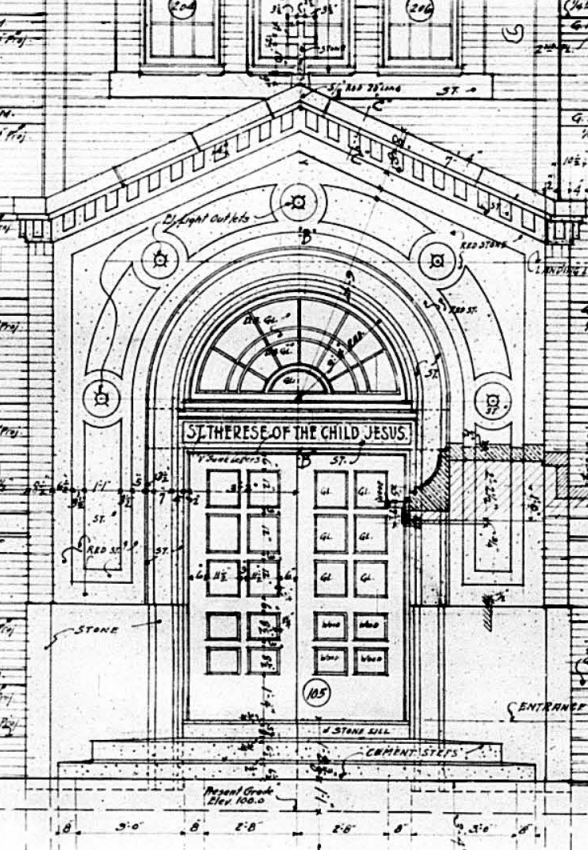
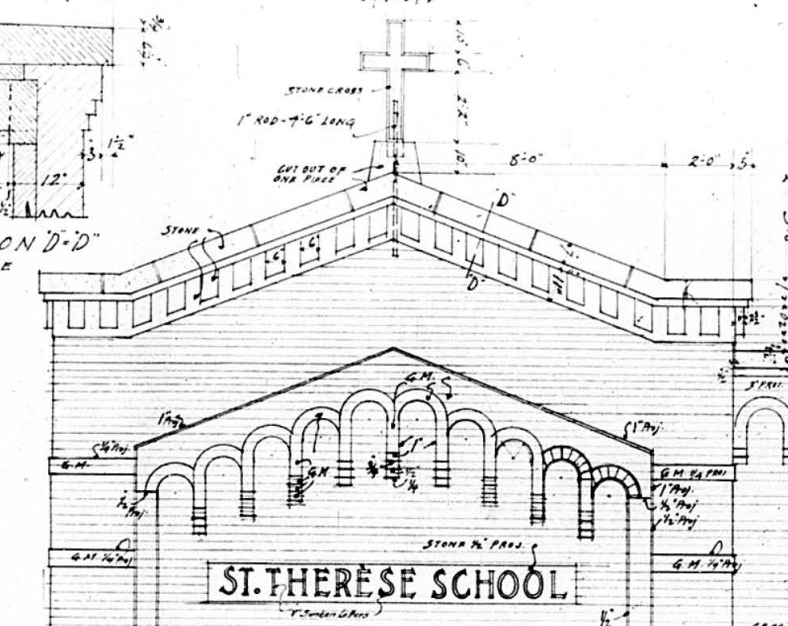
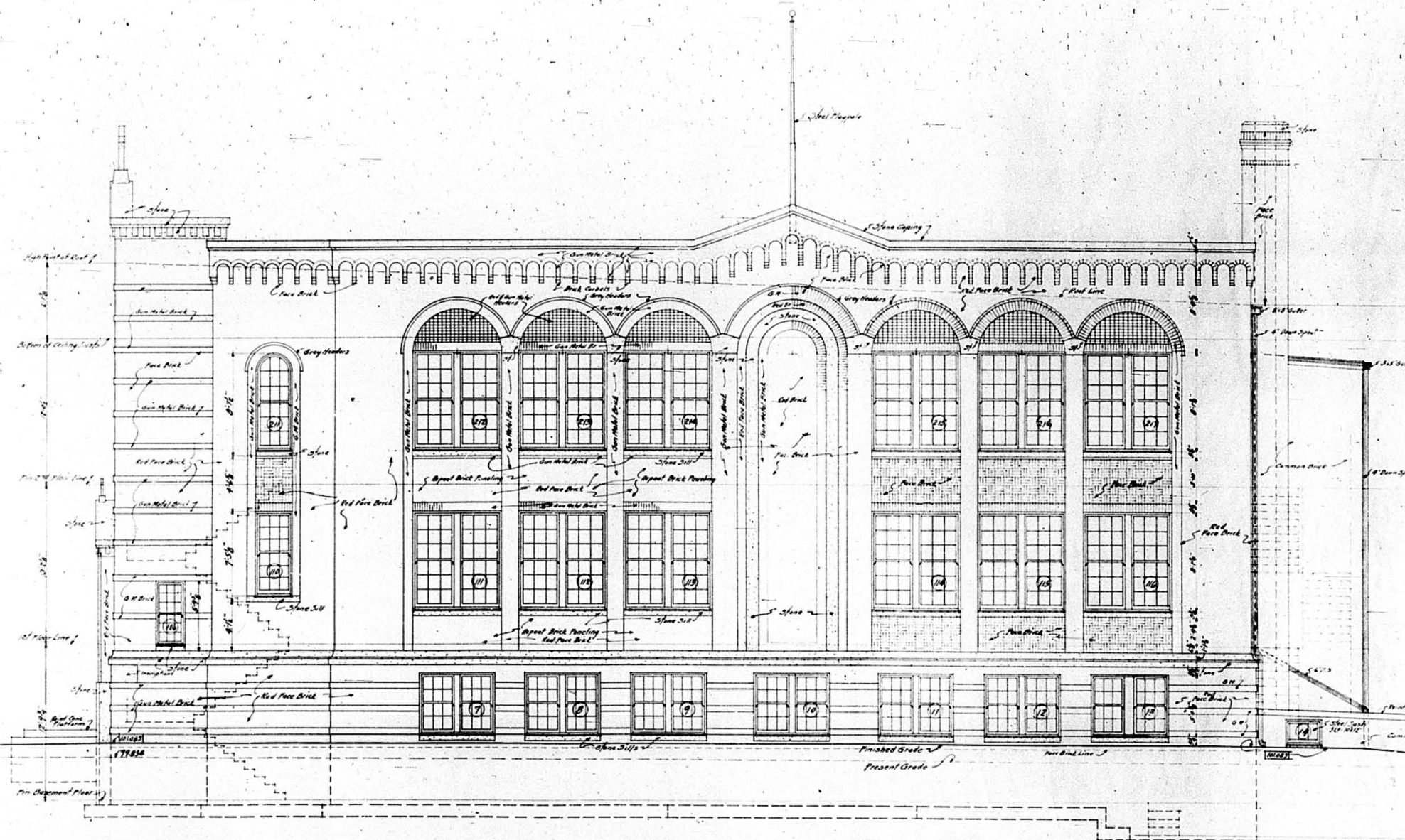
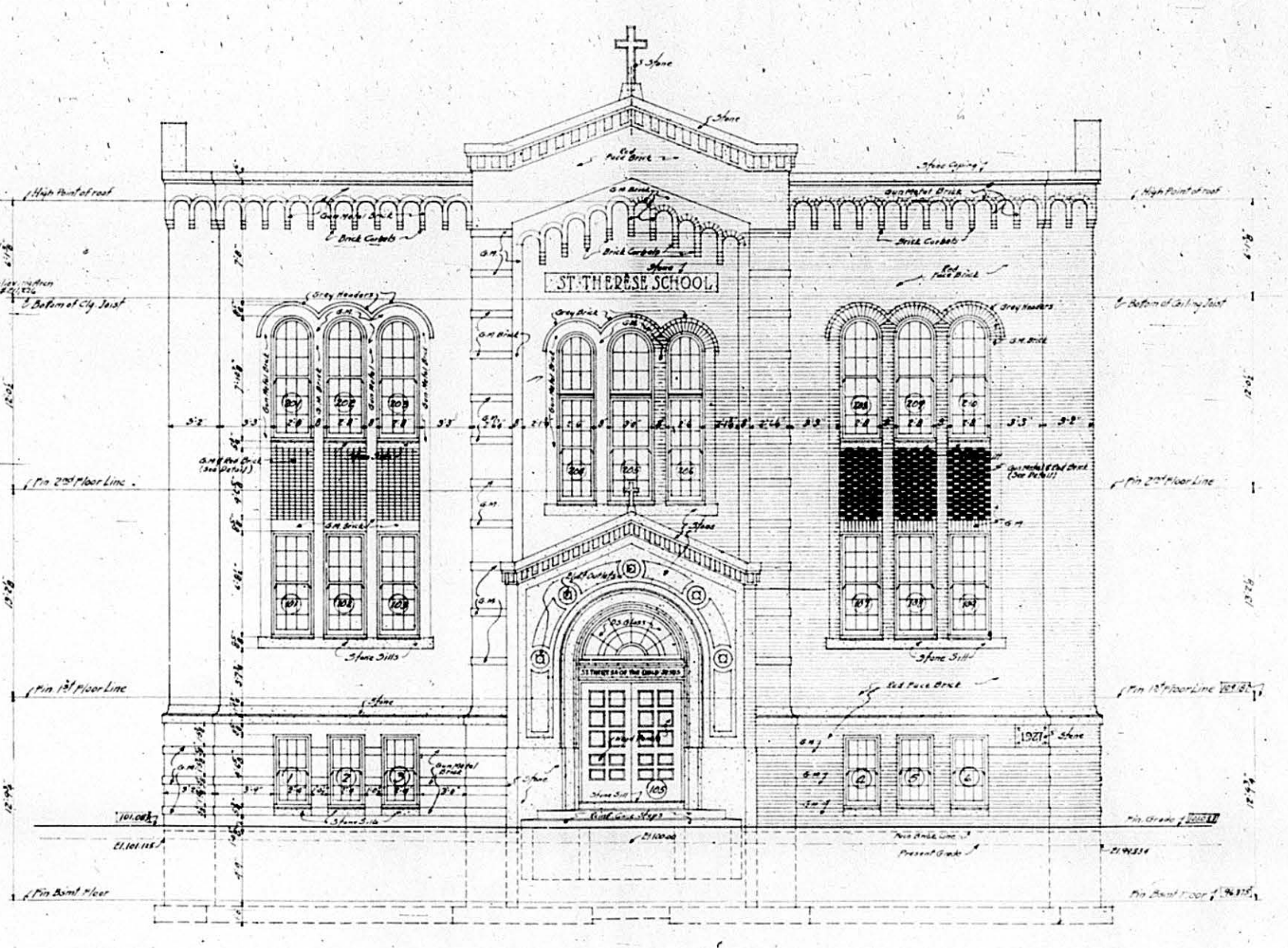
These are authentic 1927 architectural designs of St. Therese by Lahr & Strangel, architects. Courtesy of the City of Omaha.
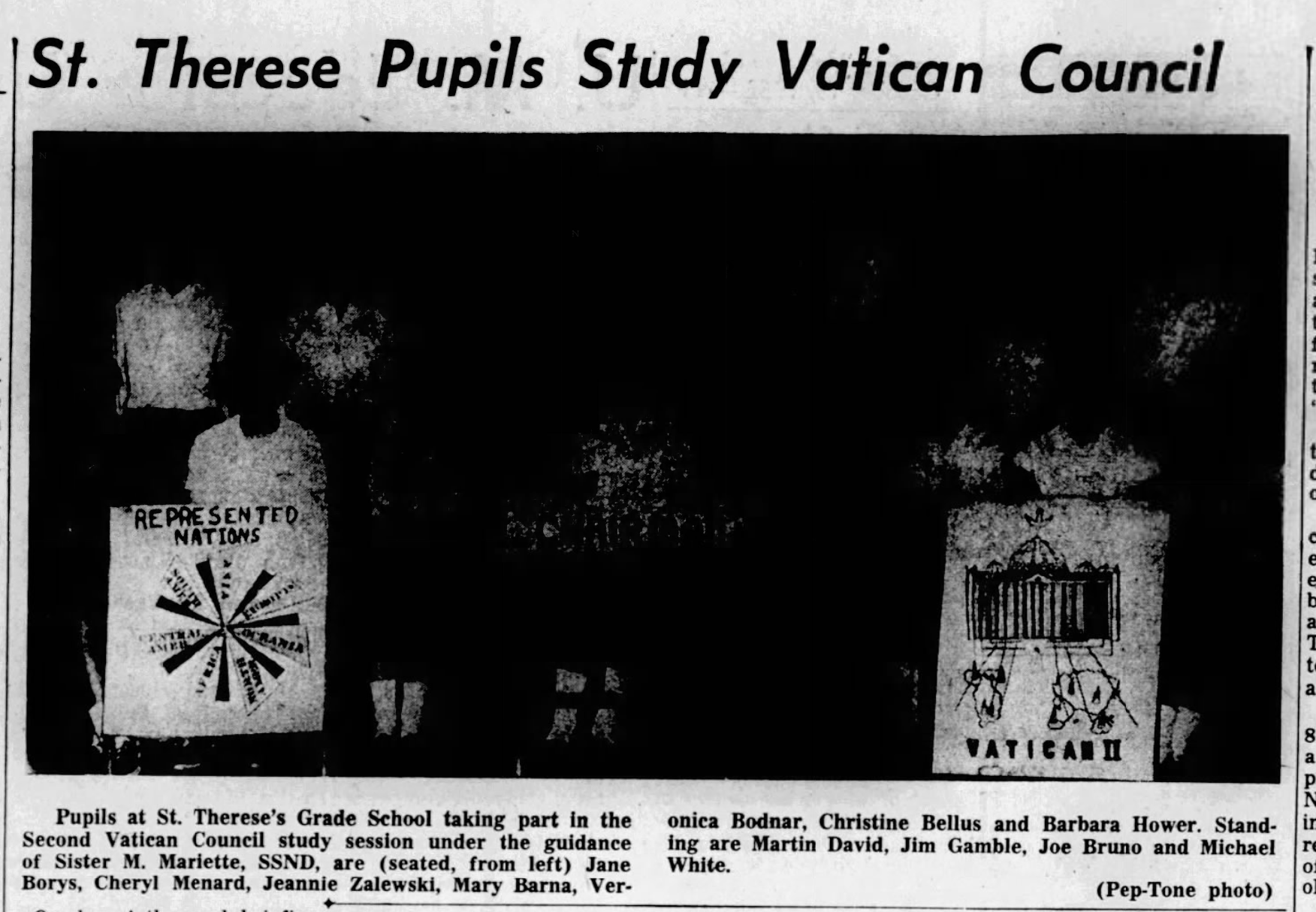
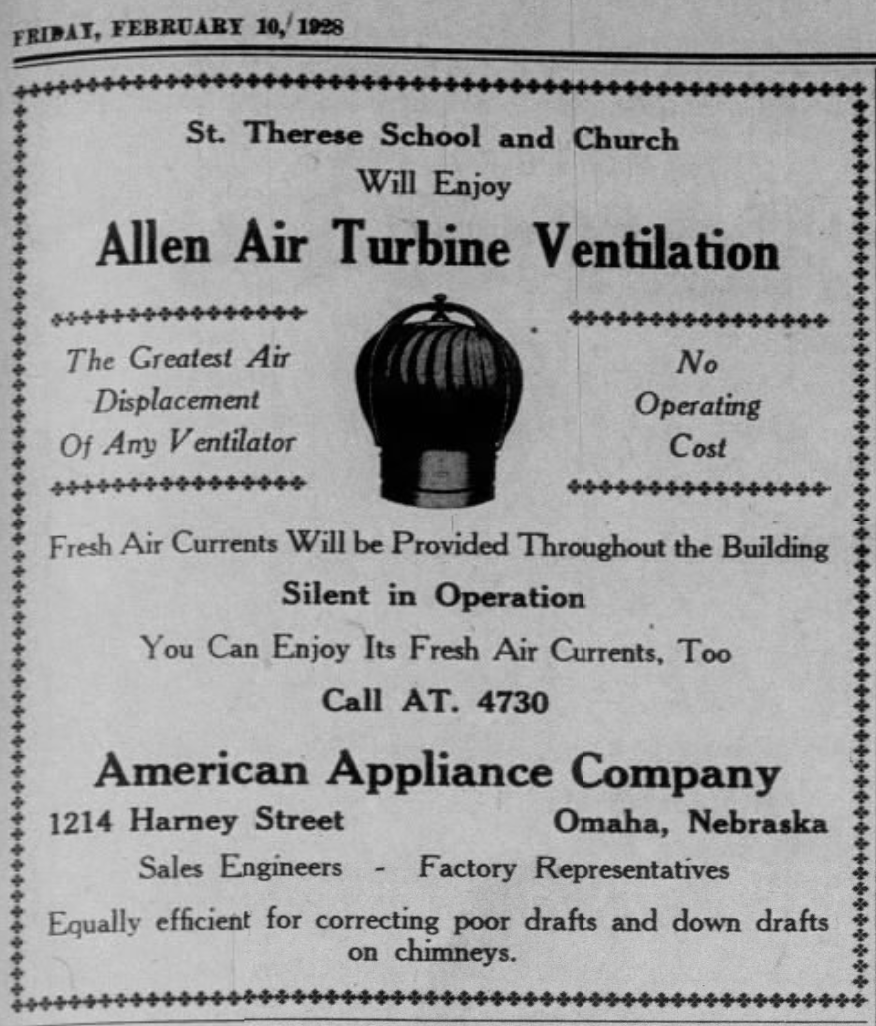






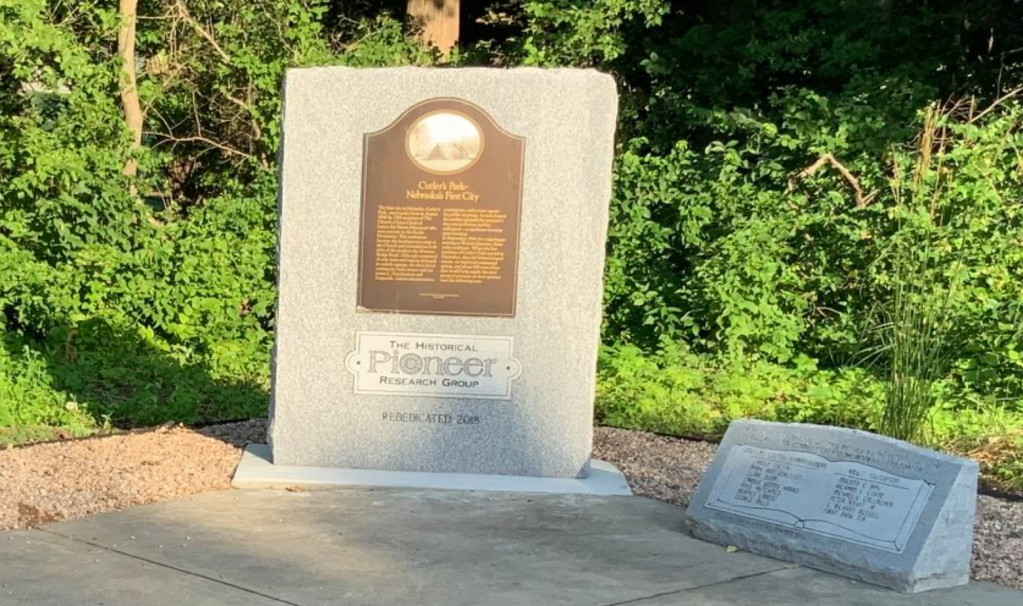
Leave a comment